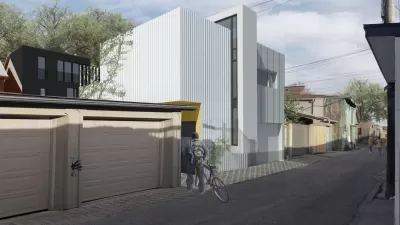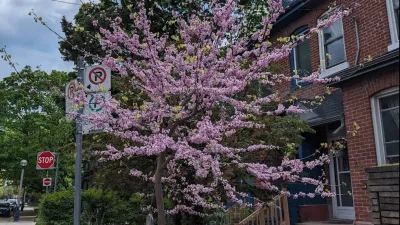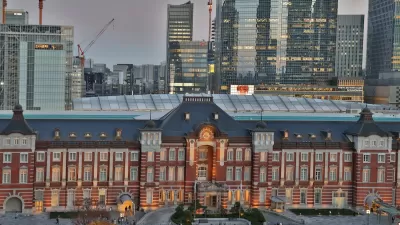A decade ago, a landmark study proposed alley-side infill development, or laneway housing, as a way to provide Toronto with thousands of affordable units. Despite significant obstacles, some developers and architects remain committed to the idea.
Alex Nino Gheciu examines how what was once seen as a promising concept for elegantly adding density to existing neighborhoods in Toronto at an offordable price point has been stymied by "zoning restrictions, lack of infrastructure and narrow back alleys that were never designed for homes." Despite such obstacles, the attraction of the housing type, which has proven popular in other cities such as Vancouver, still has adherents in architecture and development circles.
"A landmark 2003 study by architects Terence Van Elslander and Jeffrey Stinson found that Toronto’s laneways could house around 6,150 new homes. What’s more, they said, those homes could be built on the cheap — $100,000 each — without altering the streetscape of neighbourhoods, as they could be built on existing infrastructure."
"Nowadays, Van Elslander is a lot more cynical. A stricter approval process has made building a laneway house in Toronto 'an impossibility,' he says. Years can be spent seeking consent for the projects from various municipal departments. Meanwhile, getting the alleys serviced can cost 'tens of thousands of dollars.'"
"While Van Elsander’s study championed tiny laneway houses as an unrealized source of affordable housing in Toronto, it’s often only those with the time and money to meet the technical requirements who wind up living in them."
FULL STORY: Can living in laneways fix Toronto’s density issues?

Alabama: Trump Terminates Settlements for Black Communities Harmed By Raw Sewage
Trump deemed the landmark civil rights agreement “illegal DEI and environmental justice policy.”

Study: Maui’s Plan to Convert Vacation Rentals to Long-Term Housing Could Cause Nearly $1 Billion Economic Loss
The plan would reduce visitor accommodation by 25% resulting in 1,900 jobs lost.

Planetizen Federal Action Tracker
A weekly monitor of how Trump’s orders and actions are impacting planners and planning in America.

Wind Energy on the Rise Despite Federal Policy Reversal
The Trump administration is revoking federal support for renewable energy, but demand for new projects continues unabated.

Passengers Flock to Caltrain After Electrification
The new electric trains are running faster and more reliably, leading to strong ridership growth on the Bay Area rail system.

Texas Churches Rally Behind ‘Yes in God’s Back Yard’ Legislation
Religious leaders want the state to reduce zoning regulations to streamline leasing church-owned land to housing developers.
Urban Design for Planners 1: Software Tools
This six-course series explores essential urban design concepts using open source software and equips planners with the tools they need to participate fully in the urban design process.
Planning for Universal Design
Learn the tools for implementing Universal Design in planning regulations.
Caltrans
Smith Gee Studio
Institute for Housing and Urban Development Studies (IHS)
City of Grandview
Harvard GSD Executive Education
Toledo-Lucas County Plan Commissions
Salt Lake City
NYU Wagner Graduate School of Public Service





























